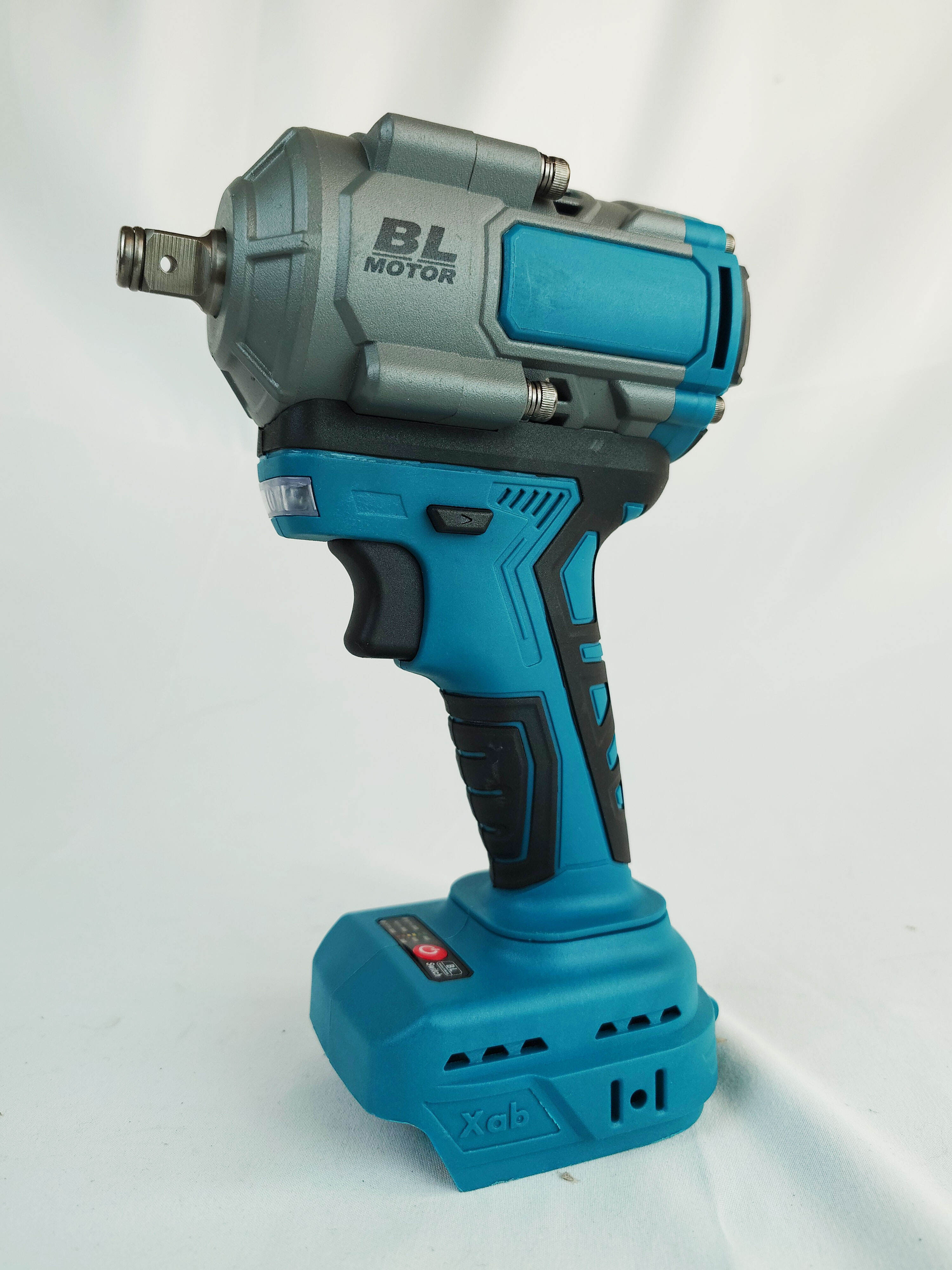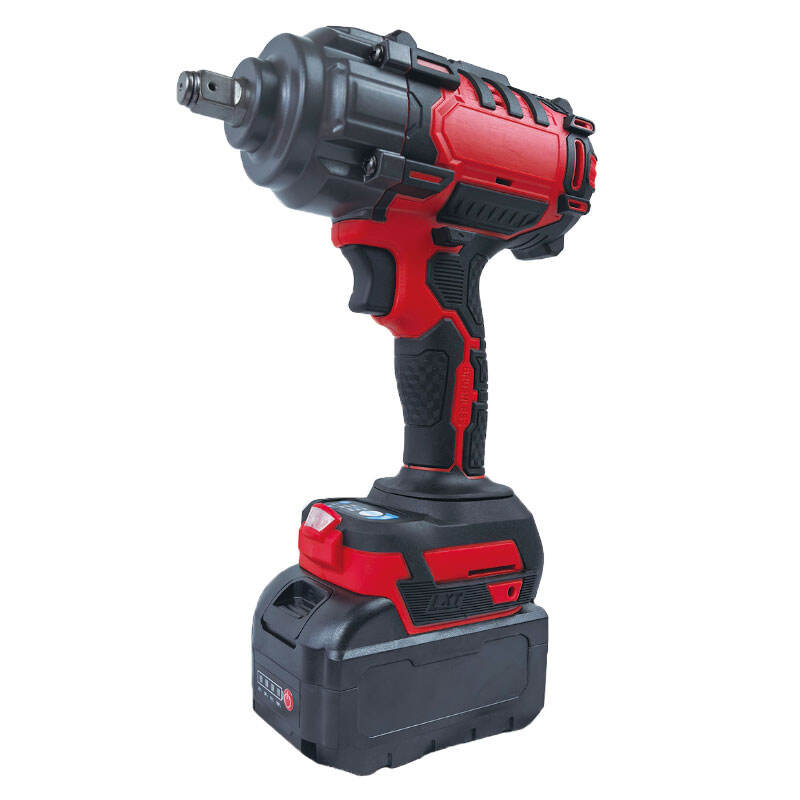Introduction to Impact Wrenches
An impact wrench, also known as an impact gun or torque gun, is a powerful tool commonly used in various mechanical and industrial applications. It is designed to deliver high torque output with minimal effort from the user. This tool operates using a hammering mechanism that delivers rapid bursts of force to a fastener, such as a bolt or nut. It is an essential tool in fields like automotive repair, construction, and assembly lines, where efficiency and speed are critical. Impact wrenches are available in both electric and pneumatic versions, with each offering its unique benefits depending on the task at hand. Understanding how an impact wrench works and its benefits can significantly enhance its usage and efficiency.
How Does an Impact Wrench Work?
Impact wrenches function by generating a high torque output through rotational force. The mechanism involves an internal hammer that strikes a specific anvil with force to impart rapid bursts of torque. The design of the impact wrench allows the tool to work efficiently even in tight spaces, delivering the necessary power to loosen or tighten fasteners quickly and effectively. There are two main types of impact wrenches: pneumatic and electric. Pneumatic impact wrenches use compressed air to create the torque, making them lighter and more portable, while electric impact wrenches are powered by electricity and are often more convenient for smaller jobs or indoor use. Both types utilize a hammer-and-anvil system, but the power source and speed can vary based on the type.

Types of Impact Wrenches
Pneumatic Impact Wrenches
Pneumatic impact wrenches are powered by compressed air, making them a common choice for heavy-duty tasks in industrial settings. These tools are known for their high torque output and durability, as well as their ability to work continuously without overheating. They are typically used in automotive repair shops, construction sites, and factories where power tools are needed for long hours of operation. One of the major advantages of pneumatic impact wrenches is their light weight, as the air compressor provides the power necessary for the tool to function, rather than relying on the motor itself. This allows workers to use the tool for extended periods without experiencing fatigue.
Electric Impact Wrenches
Electric impact wrenches are powered by electricity, either through a cord or a rechargeable battery. These models are ideal for light to medium-duty tasks and are commonly used for home repairs, small construction projects, and DIY enthusiasts. One of the main benefits of electric impact wrenches is their ease of use; they do not require an air compressor or bulky hoses, making them portable and user-friendly. Furthermore, electric models can be plugged into standard outlets or operated on battery power, giving them flexibility and mobility. Although electric models are not as powerful as pneumatic tools, they still provide adequate torque for many everyday tasks, making them a valuable addition to any toolbox.
Key Features of an Impact Wrench
Torque Output
The torque output of an impact wrench is a critical factor in determining its performance and suitability for various tasks. The higher the torque output, the more powerful the wrench, which enables it to handle tougher fasteners and demanding tasks. Torque is typically measured in foot-pounds (ft-lb) or Newton meters (Nm). For light-duty jobs such as home repairs or automotive maintenance, impact wrenches with lower torque values (around 100-200 ft-lb) are sufficient. However, for more challenging applications such as construction or heavy machinery maintenance, a higher torque rating (above 500 ft-lb) may be necessary to ensure optimal performance and efficiency. Understanding the torque requirements of your specific tasks will help you choose the right impact wrench for the job.
Speed and RPM
The speed of an impact wrench, measured in revolutions per minute (RPM), is another important feature to consider. RPM determines how fast the wrench can rotate, which directly affects how quickly it can complete tasks. Higher RPMs are beneficial for fastener removal or installation, especially in large-scale or high-volume applications. However, in some cases, lower RPM models may be preferable for tasks that require more control, such as precision tightening or delicate components. Many modern impact wrenches feature variable speed controls, allowing users to adjust the speed according to the specific needs of the job, providing greater versatility and control.
Common Applications of Impact Wrenches
Automotive Repair
Impact wrenches are a staple in automotive repair, particularly for removing and installing lug nuts, bolts, and fasteners. Their ability to deliver high torque in short bursts makes them ideal for quickly loosening or tightening stubborn fasteners that might otherwise require significant manual effort. Whether in a mechanic’s shop or on the side of the road, impact wrenches are indispensable for tasks such as wheel changes, engine assembly, and suspension repairs. Electric impact wrenches are particularly useful for DIY mechanics and car owners who prefer an easy-to-use, portable tool for minor automotive repairs.
Construction and Industrial Work
In construction and industrial environments, impact wrenches are used for a wide range of tasks, including the assembly and disassembly of machinery, scaffolding, and structural components. The ability to apply high torque with minimal user effort makes these tools indispensable for workers who need to complete tasks quickly and efficiently. Pneumatic impact wrenches, in particular, are preferred for their durability and power, allowing them to handle heavy-duty applications such as metalworking, concrete installation, and heavy equipment maintenance.
Maintenance Tips for Impact Wrenches
Regular Cleaning and Lubrication
To ensure the longevity and performance of an impact wrench, it is important to maintain it properly. Regular cleaning and lubrication of the internal components can prevent wear and tear, ensuring that the tool continues to operate at peak efficiency. Pneumatic impact wrenches, in particular, should be lubricated with air tool oil to prevent rust and corrosion from affecting the moving parts. Electric models may require less maintenance, but it is still essential to keep them clean and free of debris to prevent malfunctions. Regular inspection of the tool will also help identify any issues before they become major problems, saving time and money on repairs.
Proper Storage
Proper storage of an impact wrench is another important aspect of its maintenance. After each use, the tool should be stored in a dry, cool area to prevent damage from environmental factors such as moisture and extreme temperatures. For pneumatic impact wrenches, it is essential to drain any moisture from the air compressor and hose before storing the tool to avoid rust buildup. Electric models should be stored in a way that prevents damage to the power cord or battery, and any detachable components should be kept together in a safe, organized manner.
FAQ
What is the difference between a pneumatic and electric impact wrench?
The primary difference between pneumatic and electric impact wrenches lies in the power source. Pneumatic impact wrenches are powered by compressed air, making them ideal for heavy-duty applications where portability and continuous operation are required. Electric impact wrenches, on the other hand, are powered by electricity and are often more compact and portable, making them better suited for light-duty tasks and DIY projects.
Can an impact wrench be used for all types of fasteners?
Impact wrenches are versatile tools that can handle a wide range of fasteners, but they are particularly effective for larger bolts, nuts, and screws that require high torque. For smaller fasteners or delicate tasks, a manual wrench or a lower torque impact wrench may be more appropriate. It’s important to select the right type of impact wrench based on the size and material of the fastener.
How do I choose the right torque for my impact wrench?
Choosing the right torque for your impact wrench depends on the tasks you plan to perform. For light-duty applications such as home repairs, a torque range of 100-200 ft-lb should suffice. For automotive repairs and medium-duty work, a range of 200-500 ft-lb is ideal, while heavy-duty tasks such as construction or industrial work may require impact wrenches with torque ratings above 500 ft-lb.


